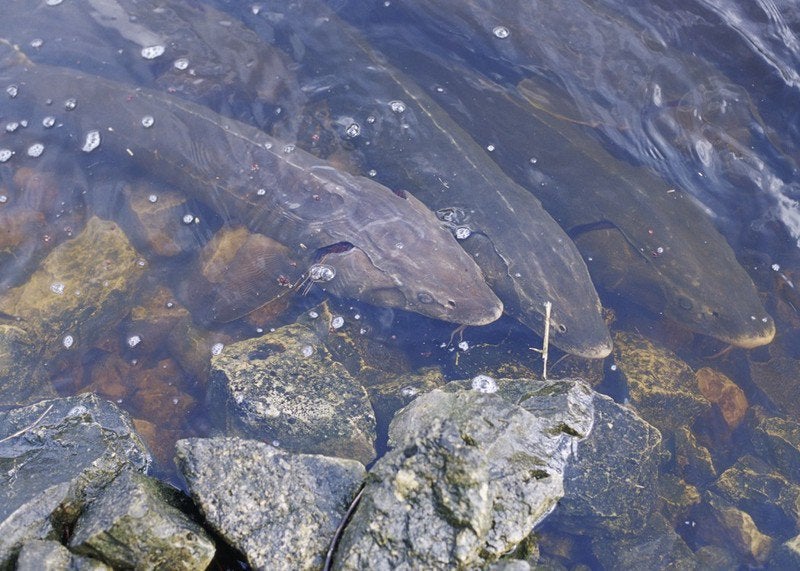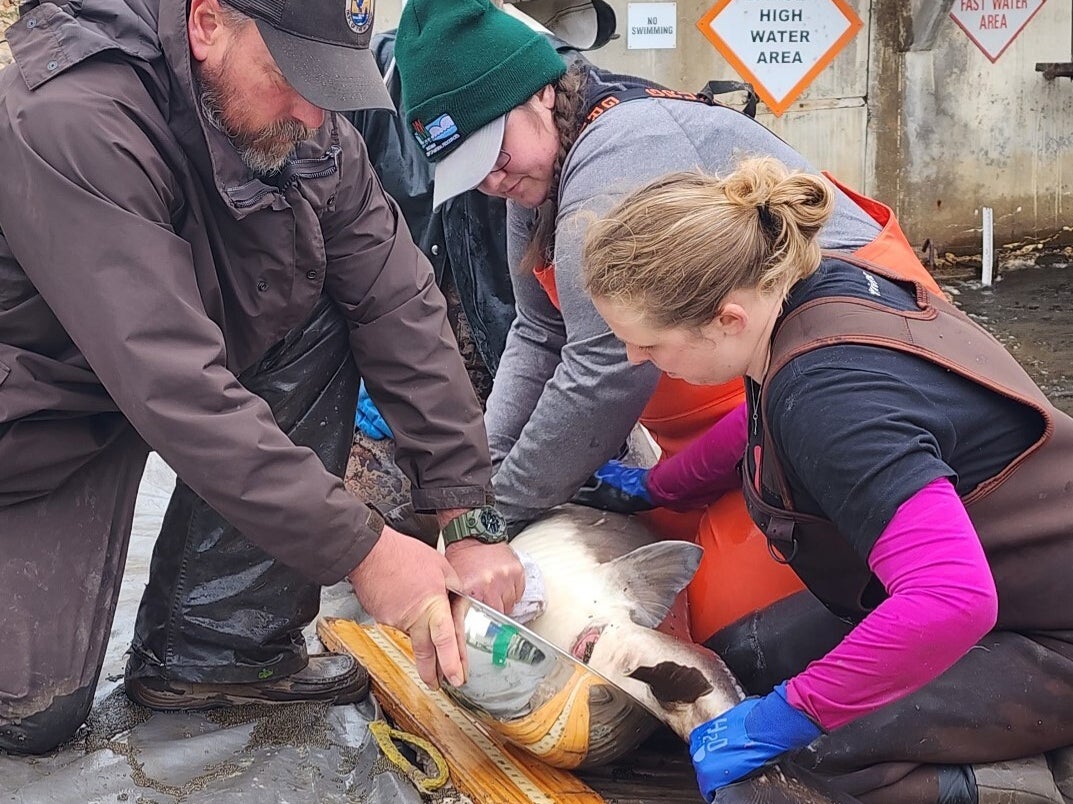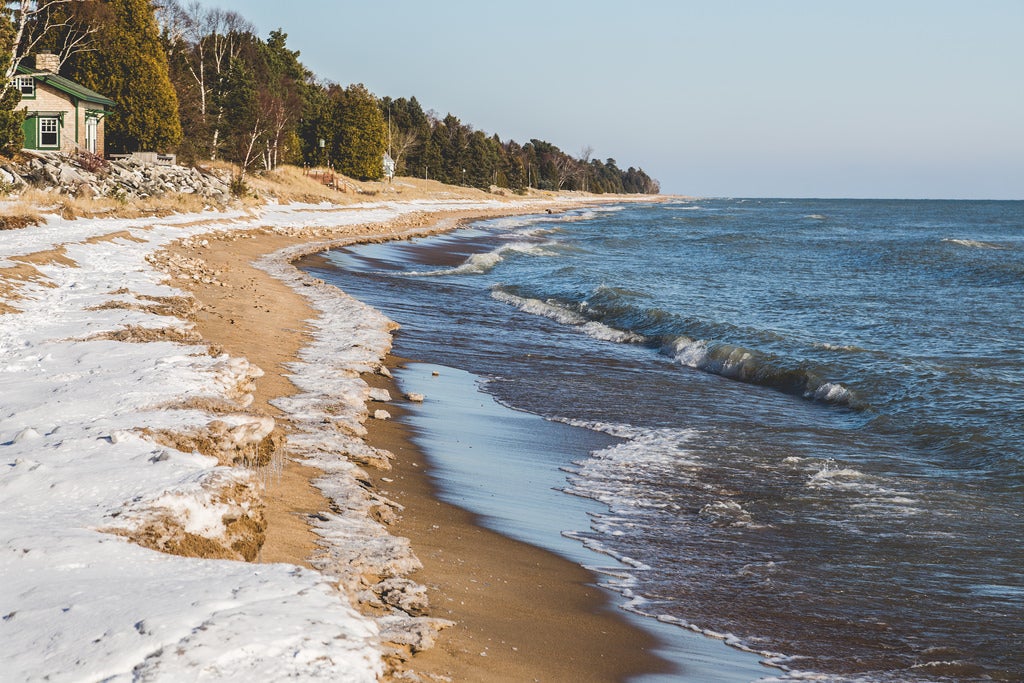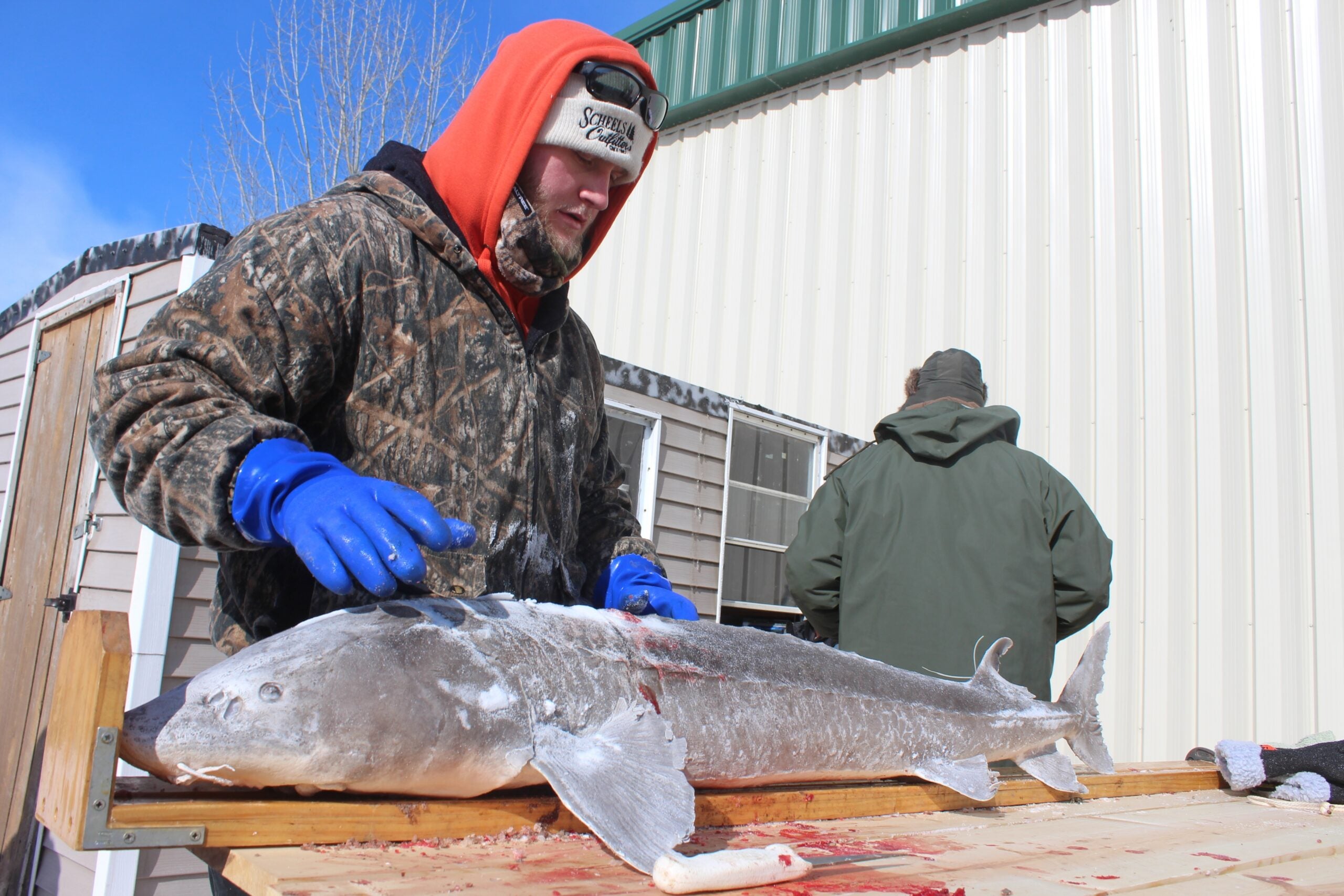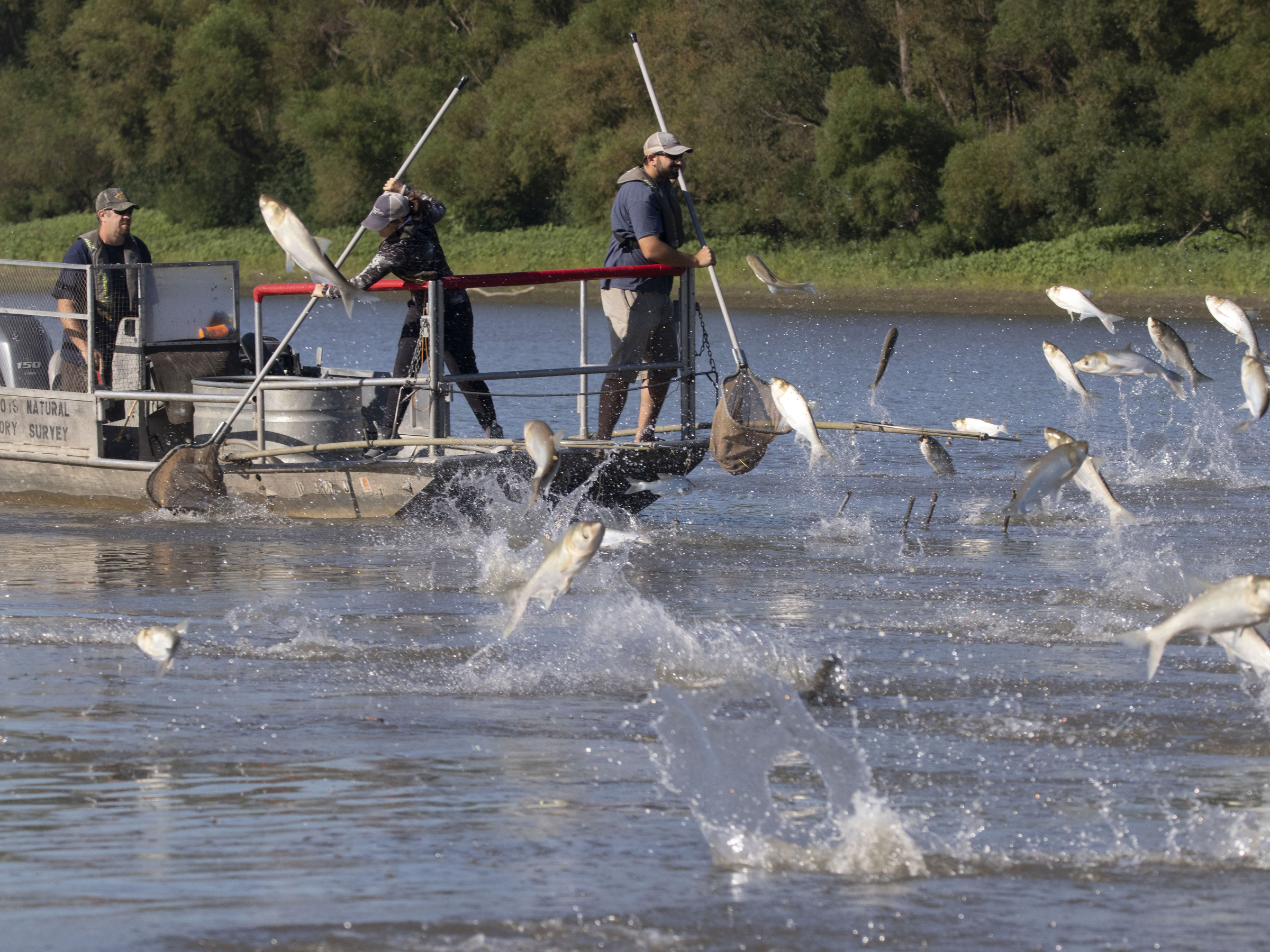On the shores of the lower Niagara River, about 10 miles from Niagara Falls, a group of biologists from the U.S. Fish and Wildlife Service prepare to examine the largest fish species in the Great Lakes region — the lake sturgeon.
“They were nearly wiped out, mostly due to over fishing,” said fish biologist Dimitry Gorsky. “We have this remnant population that survived the over-fishing and habitat destruction.”
He and his crew take blood samples and insert a tracking device inside the fish. By monitoring the sturgeon, the group can gauge the health of the Niagara River and Lake Ontario.
Stay informed on the latest news
Sign up for WPR’s email newsletter.
“If there’s anything going on in the environment, that is impacting reproduction, that could cause major problems for the population,” he said. “And so we want to make sure that by seeing successful reproduction over and over again we can say that the environment is in good shape.”
In his proposed 2018 budget, President Donald Trump eliminated $300 million for the Great Lakes Restoration Initiative. That money has been a major factor in the resurgence of the lake sturgeon.

USFWS biologists preparee to examine a lake sturgeon at the Niagara River just outside of Lake Ontario in New York. Angelica A. Morrison/WBFO
Since 2010, Gorsky’s office has used money from the initiative. The group gets about $300,000 annually for this project and others involving Great Lakes fish, like the lake trout.
Gorsky said the initiative has really expanded their abilities.
“The money helped us build capacity by replacing outdated boats and equipment, increasing our personnel. We have a larger staff than our offices have had before,” he said.
Catherine Gatenby is a biologist and spokesperson for the Lower Great Lakes Region at the Fish and Wildlife Service. She said this project aims to restore the sturgeon population so it can be fished again.
Sturgeon recovery efforts take place in various Great Lakes states, including Ohio along the Maumee River.
In New York, work also is being done on the Genesee River, which flows into Lake Ontario at Rochester.
Dawn Dittman from the U.S. Geological Survey has been working works on a restocking project on the lower end of that river. Her project has many sources of funding, including the Great Lakes Restoration Initiative.
If federal funding is pulled, she said “then only a portion of what we do now would not be possible, although we always look for alternative ways to fund the critical programs.”
The White House did not respond to requests for comment.
But Trump’s 2018 budget blueprint said states should be responsible for these projects.
Editor’s Note: Angelica A. Morrison is a reporter for WBFO in New York. This story is part of a series from Great Lakes Today, which is funded through a grant from the Corporation for Public Broadcasting.


